“O Jerusalem, Jerusalem, the city that kills the prophets and stones those who are sent to it! How often would I have gathered your children together as a hen gathers her brood under her wings, and you were not willing! See, your house is left to you desolate. For I tell you, you will not see me again, until you say, ‘Blessed is he who comes in the name of the Lord.’”
Matthew 23:37-39

There is a famous song by Israeli singer Naomi Shemer called Yerushalayim Shel Zahav, which translates to “Jerusalem, City of Gold.” This is an odd statement seeing as every building in the city is made of white limestone, not gold, and that most of the gold in the city is affixed to the Dome of the Rock, an Islamic shrine. However at certain times of the day, around sunrise or sunset, the light of the sun can hit the limestone walls in such a way that they seem to glow, and perhaps this is what Shemer was referring to when she sang the song.
Perhaps not ironically, the value of Jerusalem has little to do with its gold or riches, but the history that is (often literally) buried beneath the streets. It is a very rich and sometime convoluted history, much of which is echoed in the city itself today, from the clean open streets of the Jewish Quarter (Easily the most picturesque section of the city), to the narrow lanes of (mostly Muslim owned) shops in the Christian Quarter, to the (surprisingly) Christian church filled Moslem Quarter, and to the steep slopes of the Armenian Quarter. Hidden among this mess of streets and soaring domes and minarets is where the bulk of the Biblical narrative takes place.
Jerusalem first shows up as a Canaanite City inhabited by the Jebusites. At this time it is little more than a hillside fortress-city guarding the only reliable source of freshwater for miles, the Gihon Spring. While the text is a little hard to translate, it seems that David’s plan to take Jerusalem involved some of his men traveling up a “water shaft,” supposedly some tunnel connected to where they would gather water from the Gihon Spring. Joab, David’s nephew and first commander, succeeds in this endeavor, and David sets Jerusalem up as his capital city, bits of that city can be seen just south of the old city, in an archaeological site called the City of David.

Capital used in royal buildings 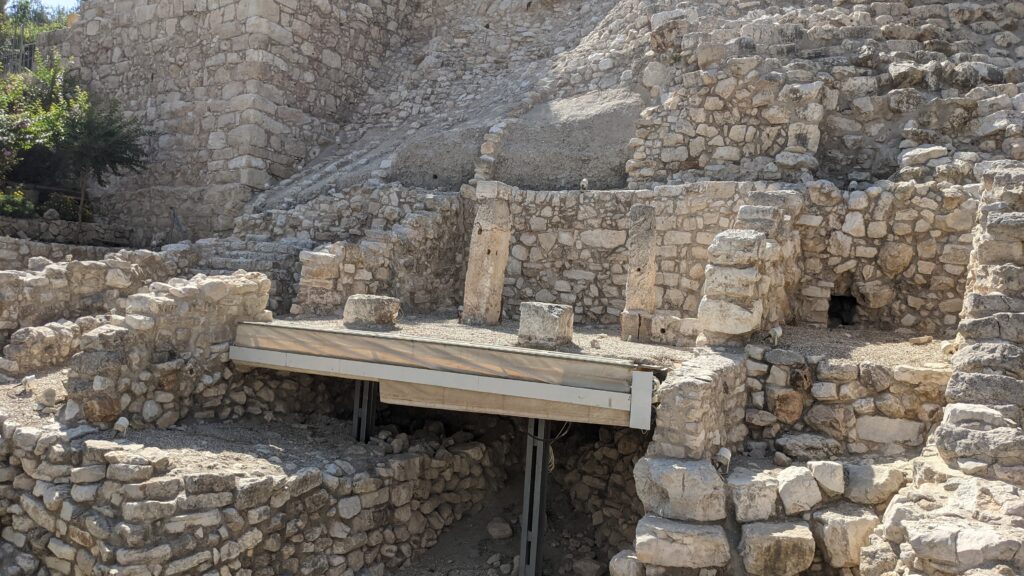
A House of a Royal Scribe 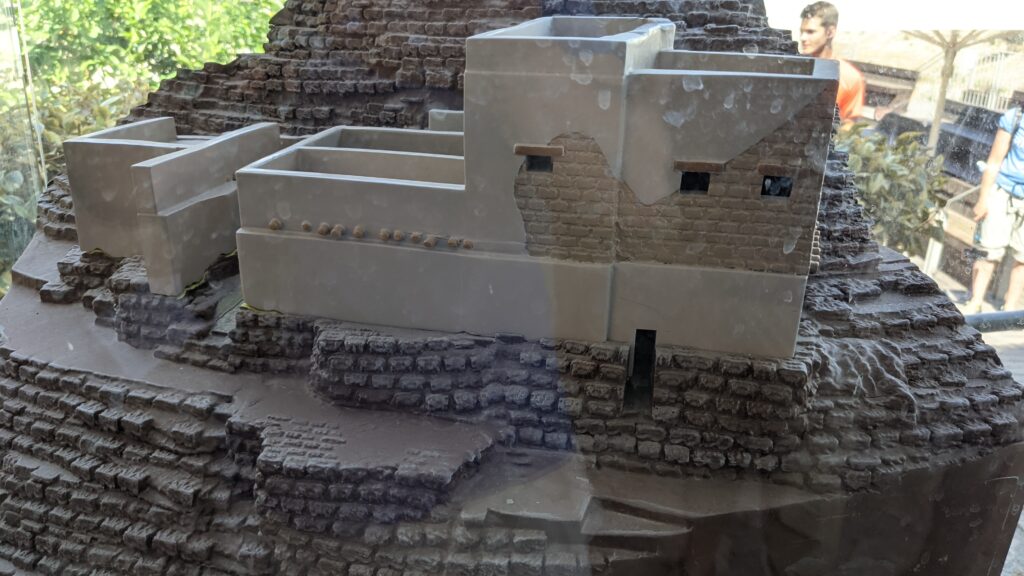
A Reconstruction of the House 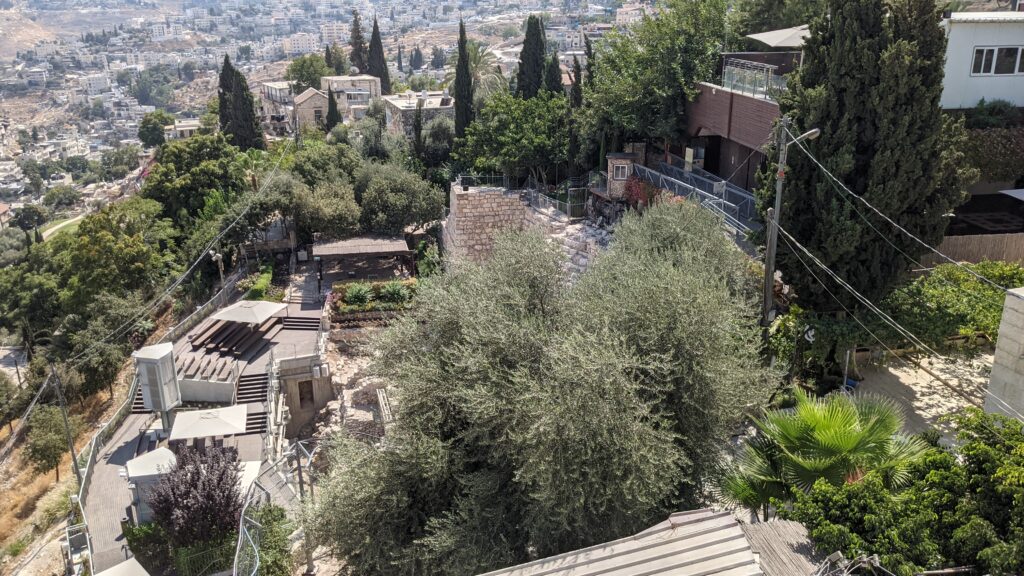
Veiw from Palace Roof 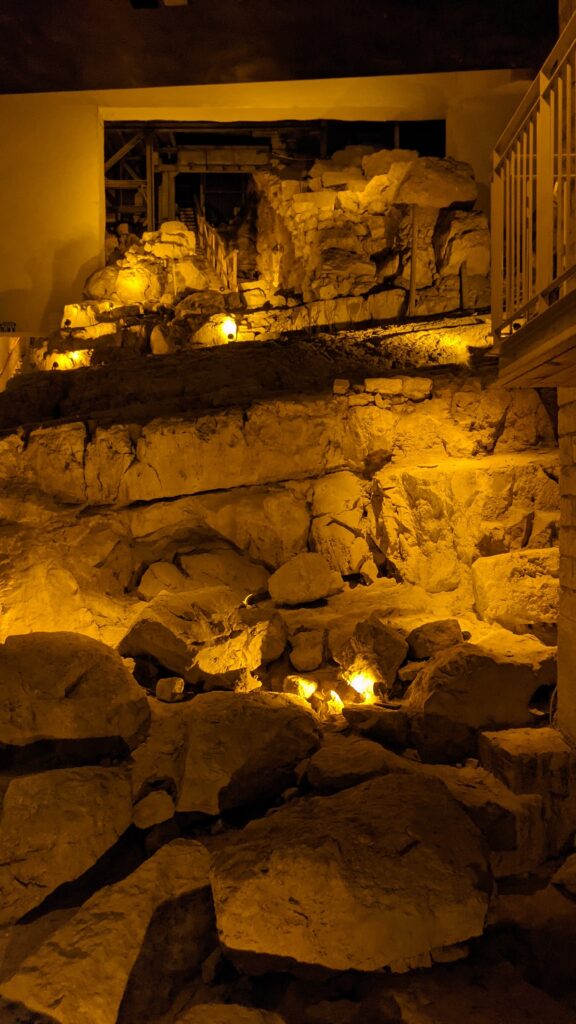
The Old Walls Defending the Spring
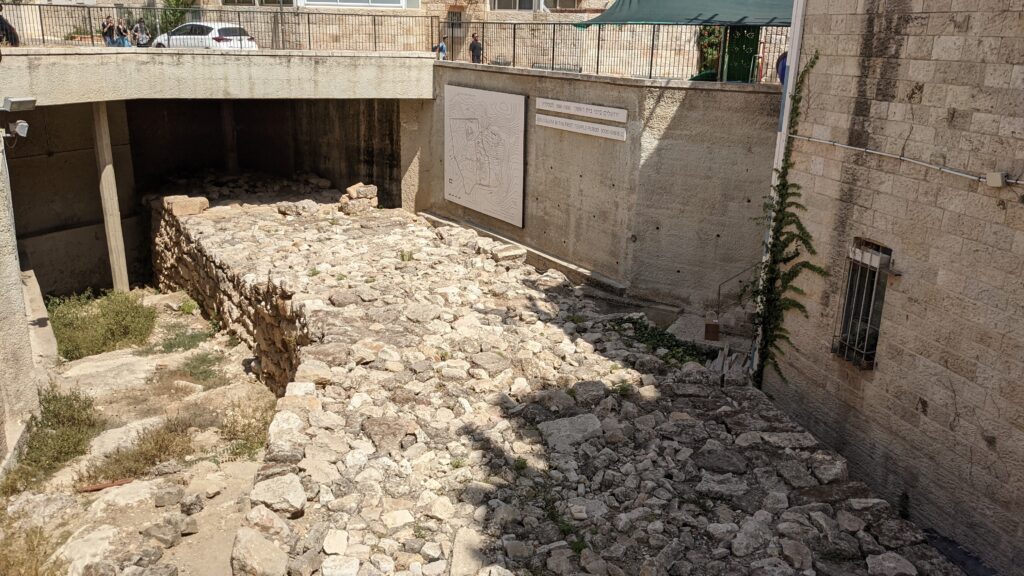
The city continued to expand until the Reign of King Hezekiah, who expanded the cities fortifications further north and west, cutting through the middle of the old city today, and also rerouting the Gihon Spring to be accessible from within the walls, in a more central part of the city. Hezekiah’s tunnel, as it is called is a fun Indiana Jones like adventure if you don’t mind tight spaces or getting your feet wet. (It’s also pitch black, so I didn’t get any good photos… sorry! If you want to see it, you’ll just have to come here.)
Despite the extra fortifications, Jerusalem was destroyed only a few generations after Hezekiah, and deported off to Babylon. After 70 years King Cyrus of Persia allowed the Jewish people to return, and rebuild the temple and walls of the city.
Here we enter a part of the narrative that is not included in most of our Bibles. Alexander the great comes conquering, and shows respect to Jerusalem. However his successors turn it into a political warzone. Antiochus Epiphanes tries to force the Jews to accept Greek religion, which causes a revolt, which leads to the creation of the Hasmonean Kingdom, the rededication of the temple after driving out the Greeks, and the origin of Hanukkah. Shortly after this, Rome begins taking over, and finds an ally in Herod, who marries into the Jewish Hasmonean Royal family, and becomes king of the Jews, even though he is not Jewish.
Herod the Great (after which all the other Herods in the Bible are named) was not a nice guy (He did try to kill all of the babies in Bethlehem after all), but he was a political genius. He won the support of the Jewish people by offering to expand and renovate the entire Temple structure (which was never quite as grand as it was prior to the destruction of the Babylonians). He expanded the mountain upon which the temple sat with a series of massive retaining walls which are the dominant feature of Jerusalem even to this day. Although instead of a temple, these walls now support the complex of the Haram es-Shariff, home of the Dome of the Rock, and the Al-Asqa Mosque. Part of one of these walls is the Western Wall, where Jews pray every day, as they are not allowed onto the mount itself.

The Dome of the Rock and Western Wall 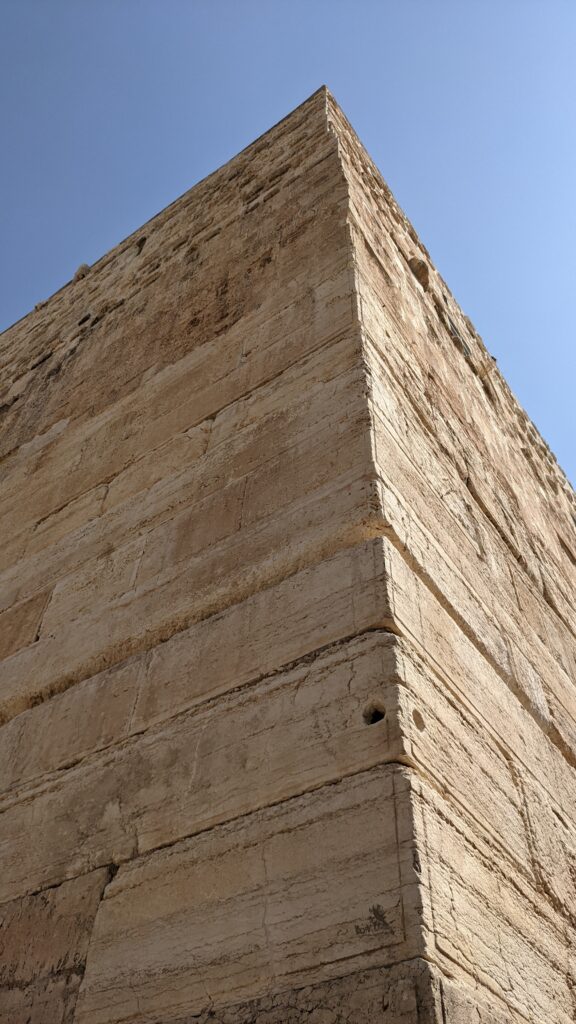
The Pinnacle of the Temple Mount 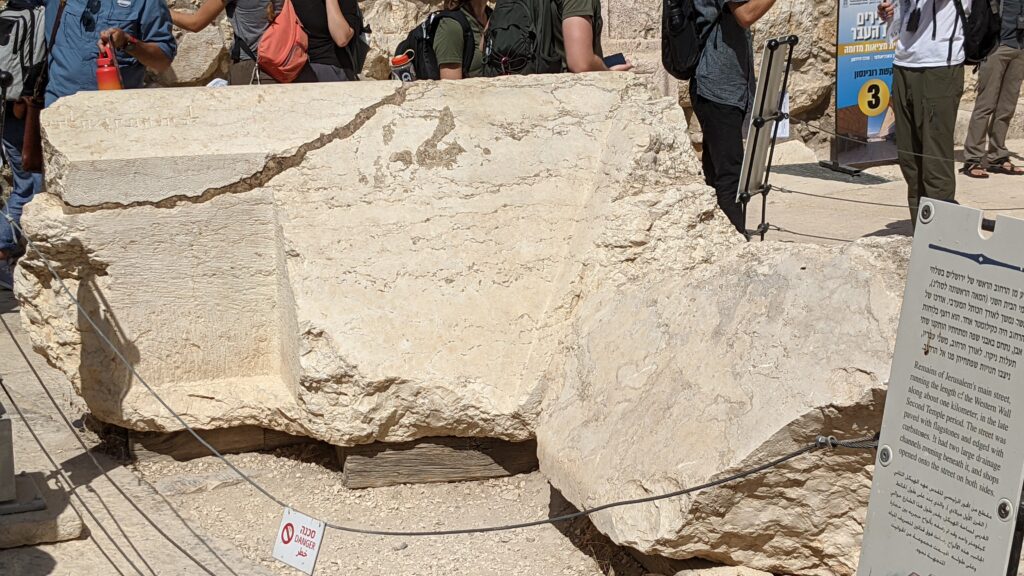
The Pace Where Trumpeters Would Stand, Used to be on the Pinnacle of the Temple Mount 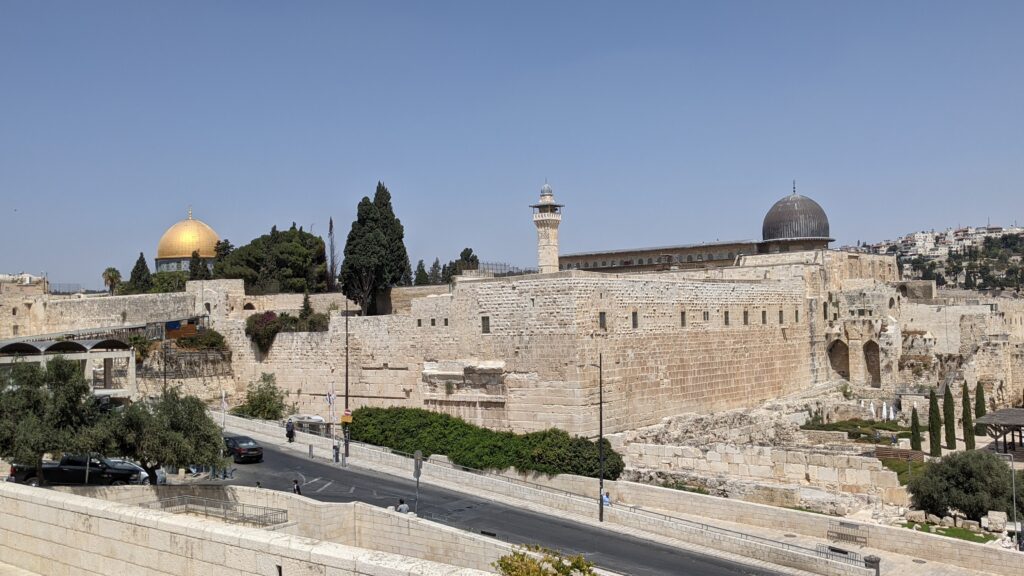
The Haram es-Shariff 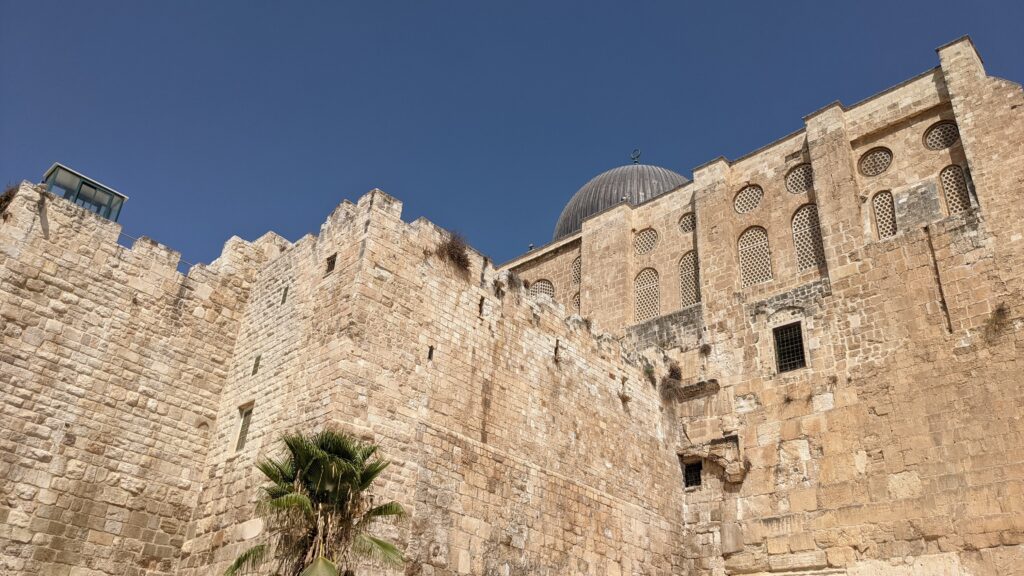
Looking up to Al-Asqa from the Southern Steps
It was in Herod’s temple that Jesus would have preached. He taught there for a few days when He was twelve, Satan tempted Him to hop from the pinnacle of the temple during His time in the wilderness, and He famously cleansed the temple after the triumphal entry into Jerusalem. After His death, resurrection, and ascension, it was likely at the temple, on the southern steps (a view from which is pictured at the top of the post), where Peter preached on the day of Pentecost, and 3000 people were baptized. This was possible due to the presence of over 50 ritual baths that dot the landscape of the southern steps into the temple.
Not long after this, the Jewish Zealots stirred up enough trouble that Rome had to respond, and respond they did, swiftly and effectively. Jerusalem was taken from the Jews, raised to the ground (even parts of the temple mount were destroyed), and rebuilt as the Roman city Aelia Capitolina. It had a traditionally Roman city design which included a major North to South Street called the Cardo. Which was lined with pillars on both sides of the road, (only half is viewable today, located 20 feet below the modern roadway.
Because of the Roman’s effective erasure of history, and the continual destruction and rebuilding of Jerusalem that followed throughout the centuries, much of the landscape remains a mystery. Everything from here on out in this post is based on theories and tradition, most of which surround Jesus.
Topping the list is the church of the Holy Seplechure, which not only has the longest traditional heritage as the place where Jesus died and was buried, but is also has the strongest physical evidence to support its claim. The church was built to preserve these sites, and in doing so removed much of the landscape and hid it inside a building which has over the years been damaged and rebuilt many times, and is so steeped in ancient traditions that it can be hard to understand what is going on at times. Nevertheless, the stone of Golgotha/Calvary is still visible and touchable within the church, and the tomb of Christ sits neatly within a small shrine under a beautiful domed room. Various mosaics and paintings ornament the walls and chambers of this oldest church in Jerusalem.

Mosaic Depicting the Death, Preparation and Burial of Jesus. Also a Map of the Church 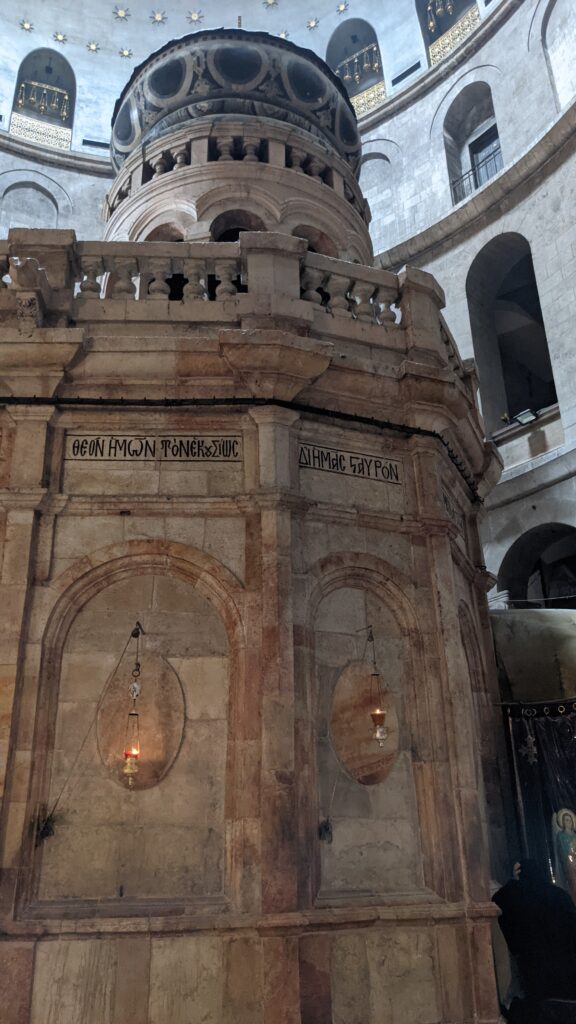
The Shrine of the Tomb of Christ 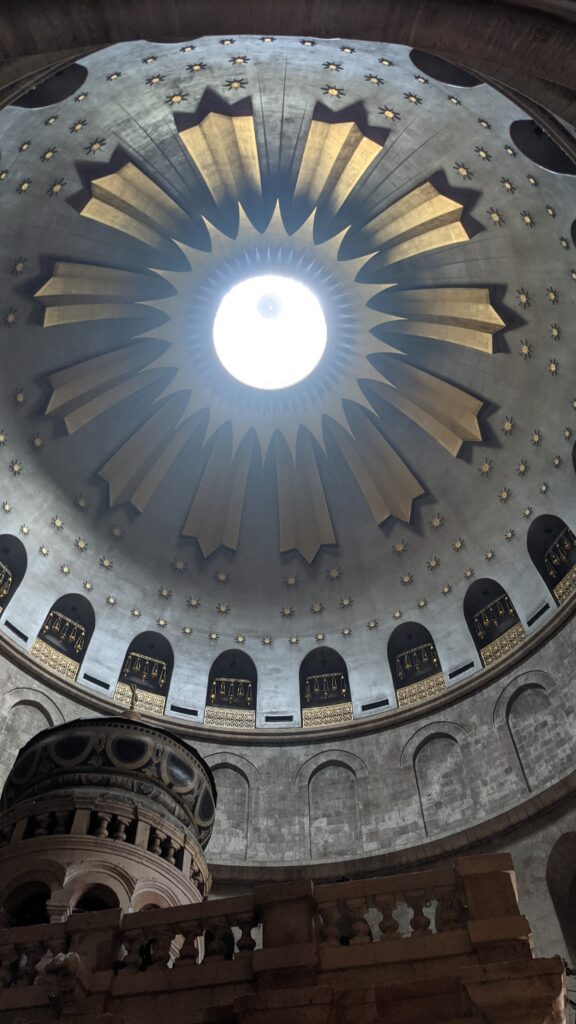
The Dome over the Shrine 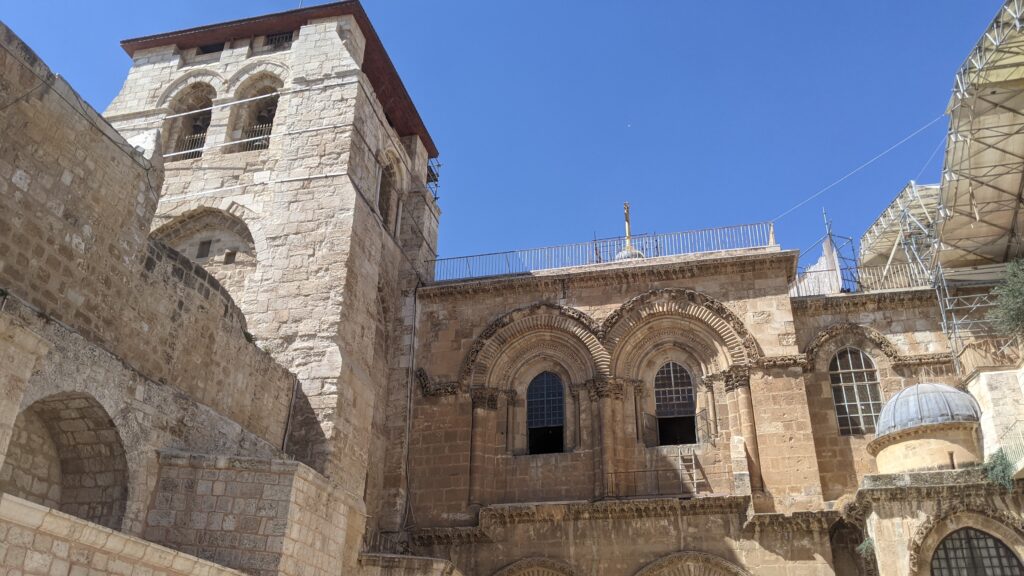
The Holy Seplechure Courtyard 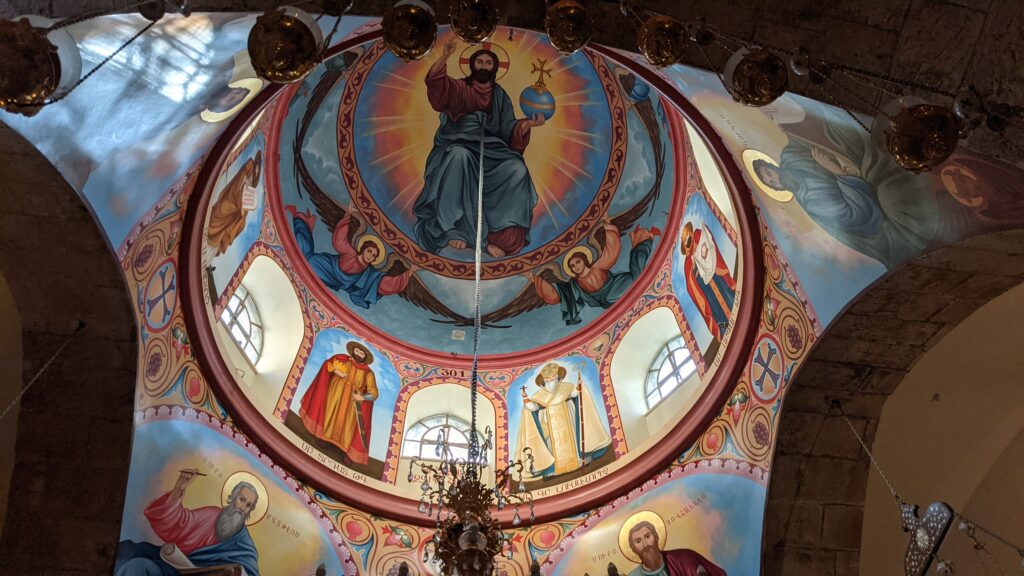
Dome within the Arminian Chapel Within the Church of the Holy Seplechure
Other traditions have pooped up over the years, some have proven false and some are still plausible. It’s like everything in Jerusalem, complicated. But I want to step back and reflect on the words of Jesus I quoted at the beginning of this post. Jesus was weeping at the sight of Jerusalem and its future state, the state it is in now. The Jewish state of Israel might control the city, but it is run by Muslims, and the Temple Mount is still overseen by Jordan. There is no temple, there is no unified worship, and even the Church of the Holy Seplechure, which houses congregations from half a dozen different church traditions, is locked and unlocked by a Muslim man every day. Jerusalem is a place of grand memories, and in a sense only those memories. It is a reminder of what was, not what could be. It is like the city of gold is in limbo, waiting for Jesus to return, and make all things new.

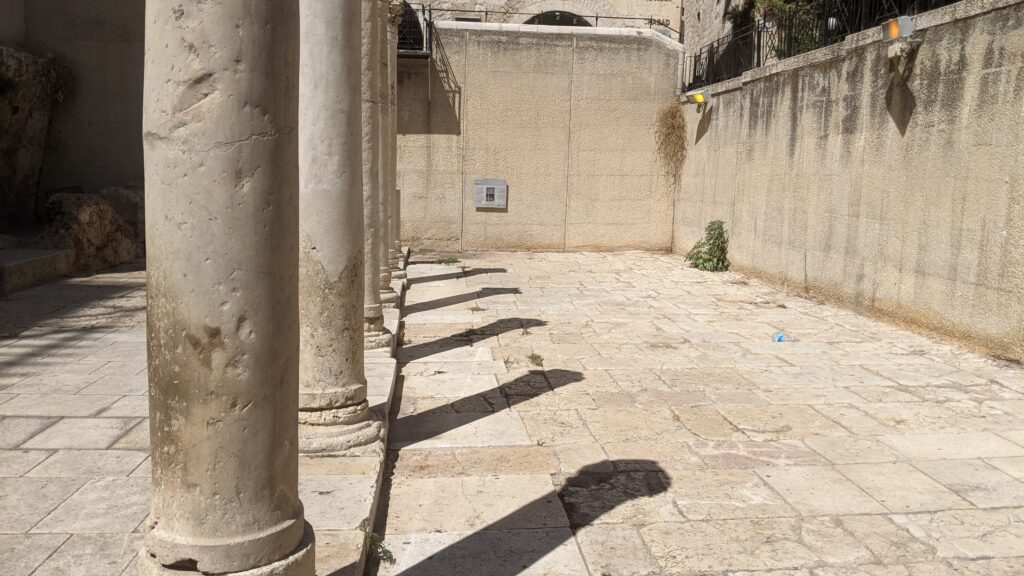
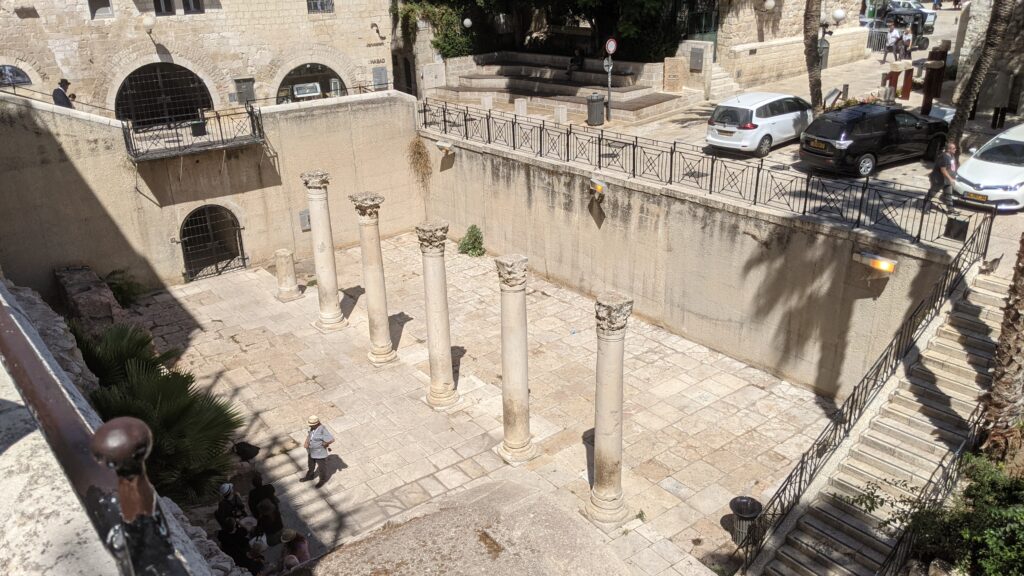
Dave Williams